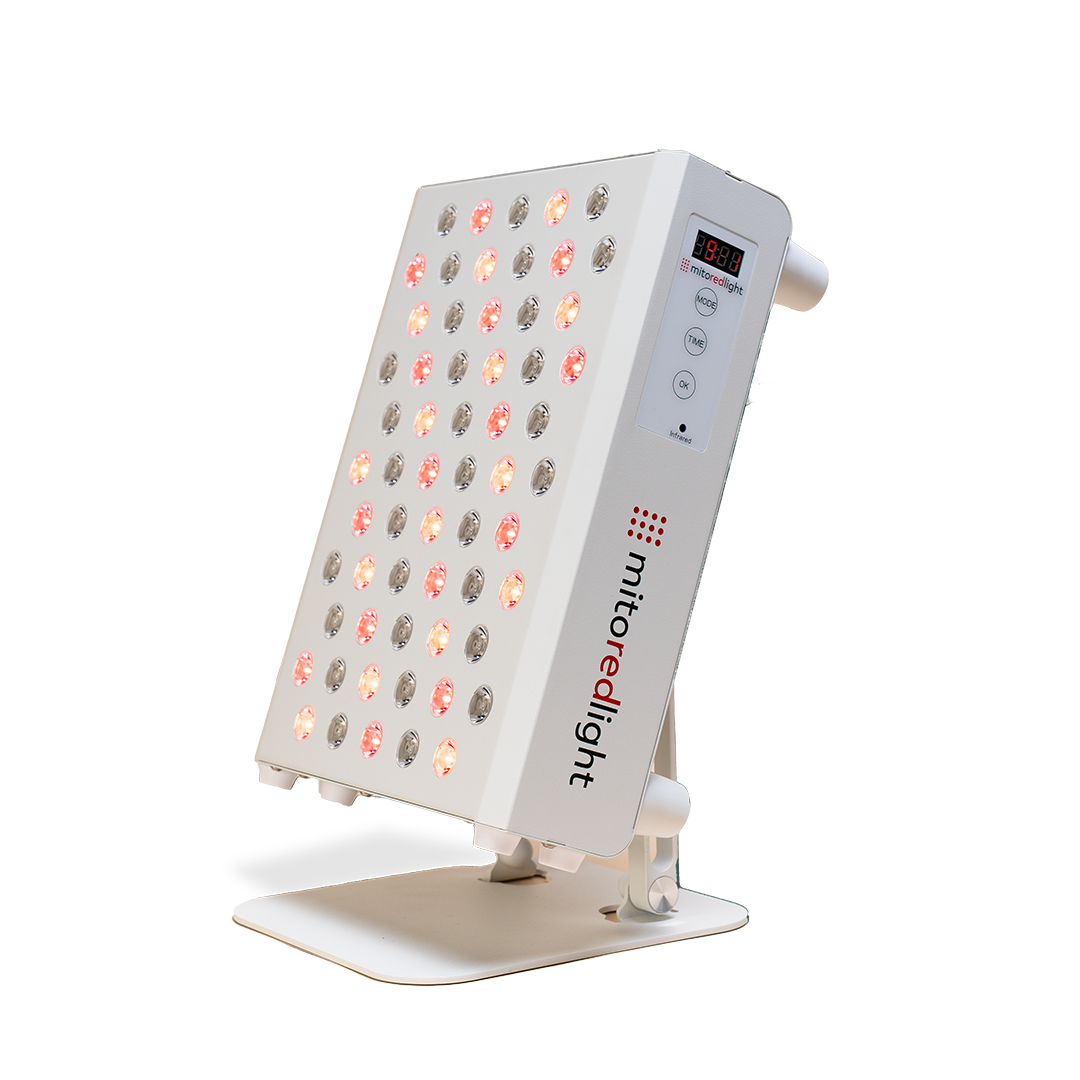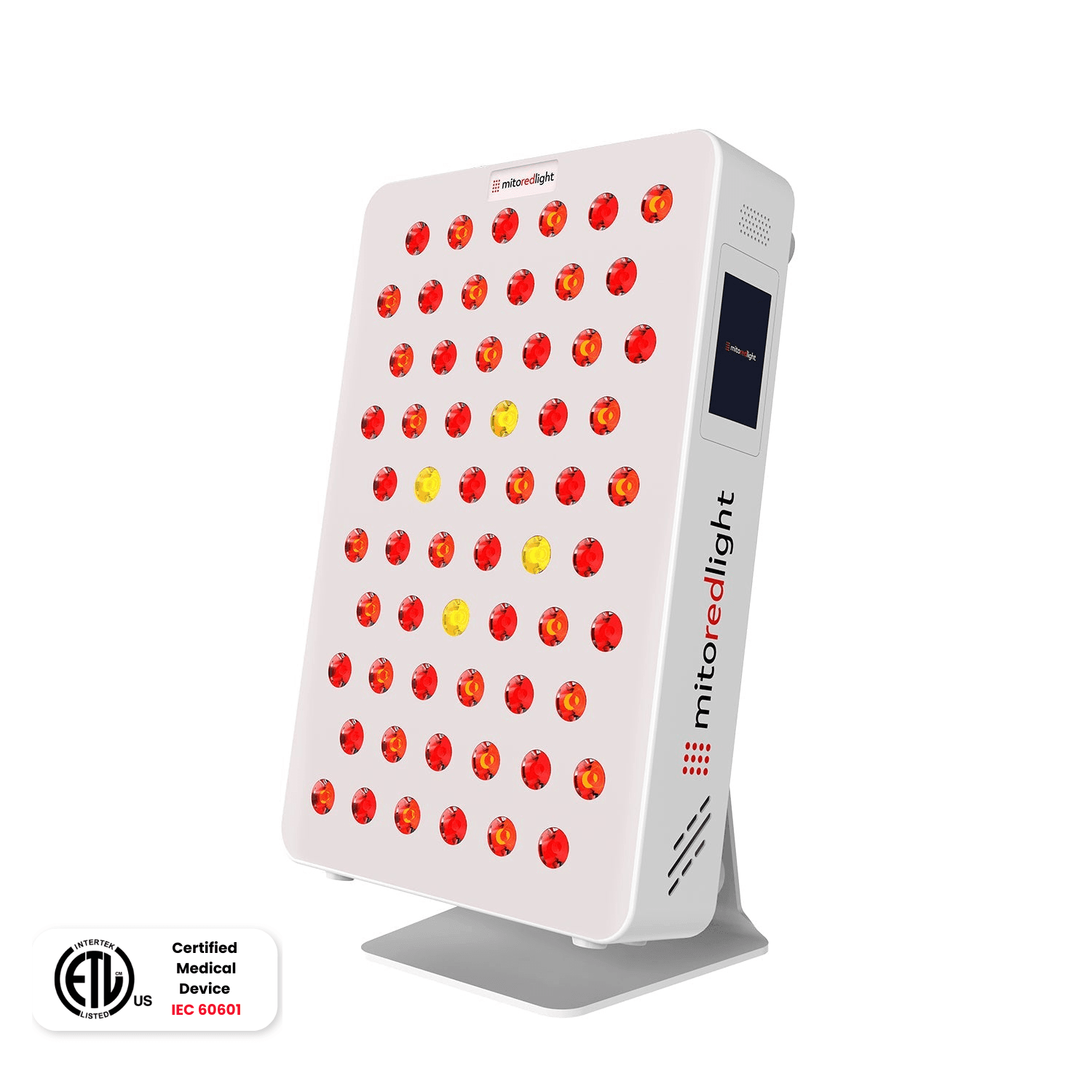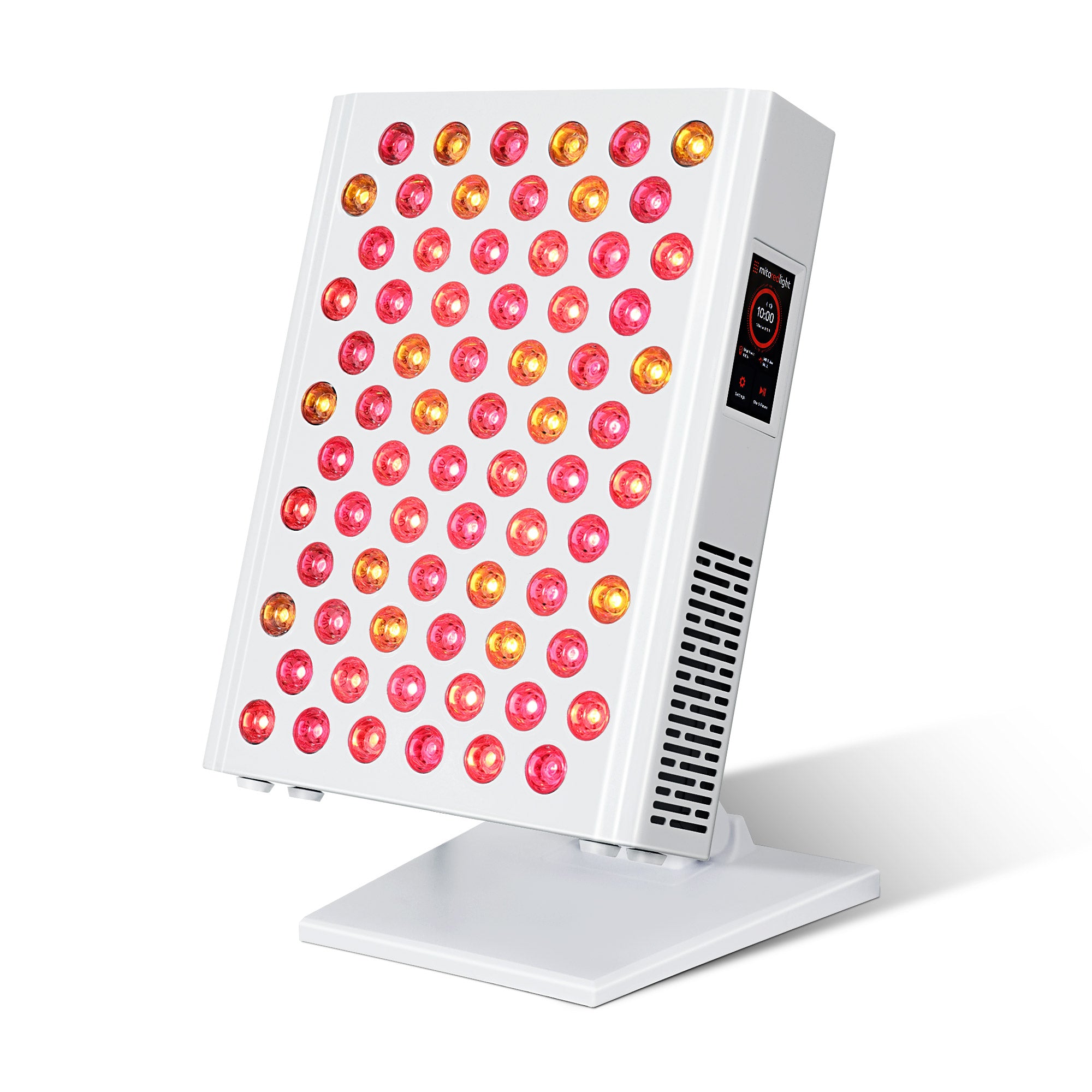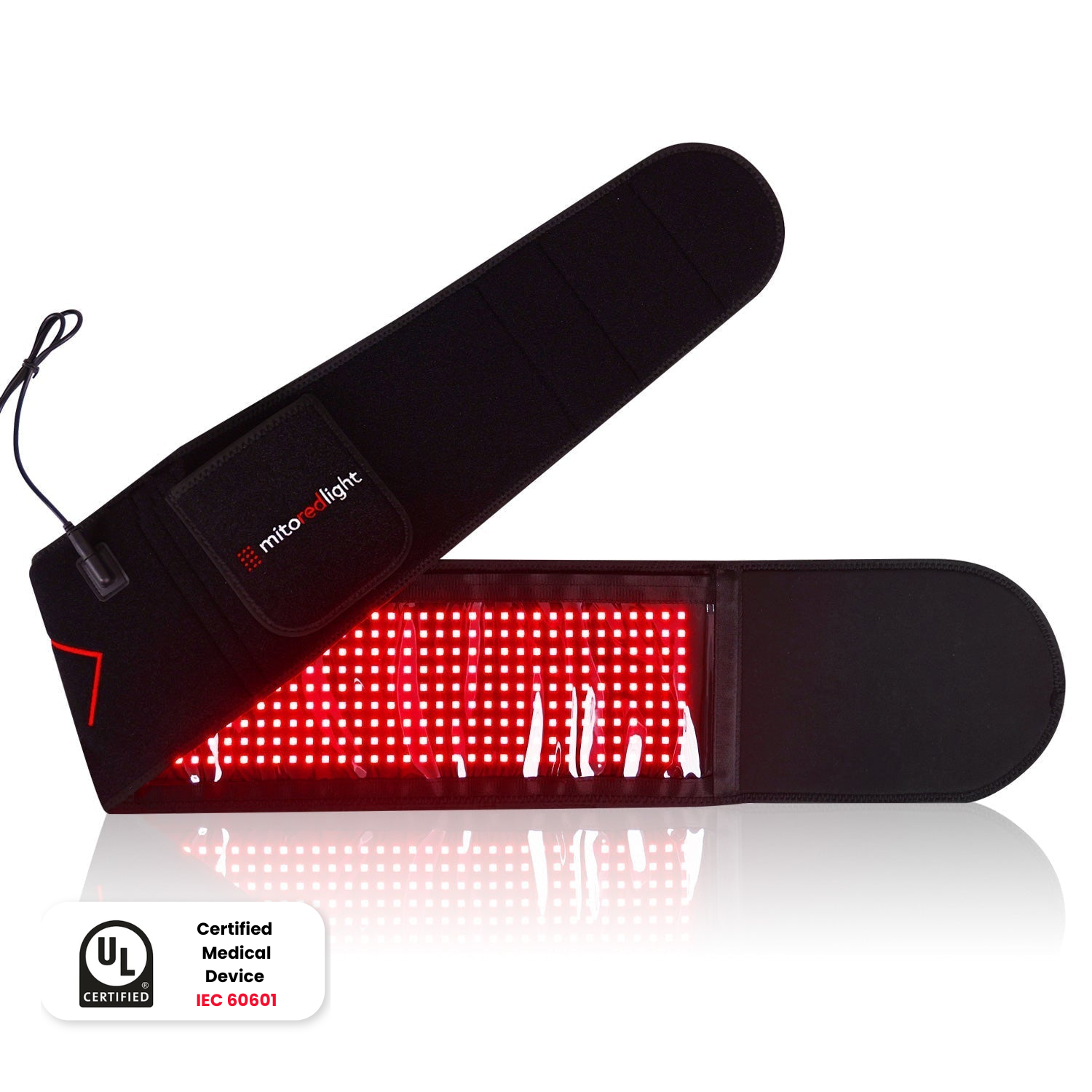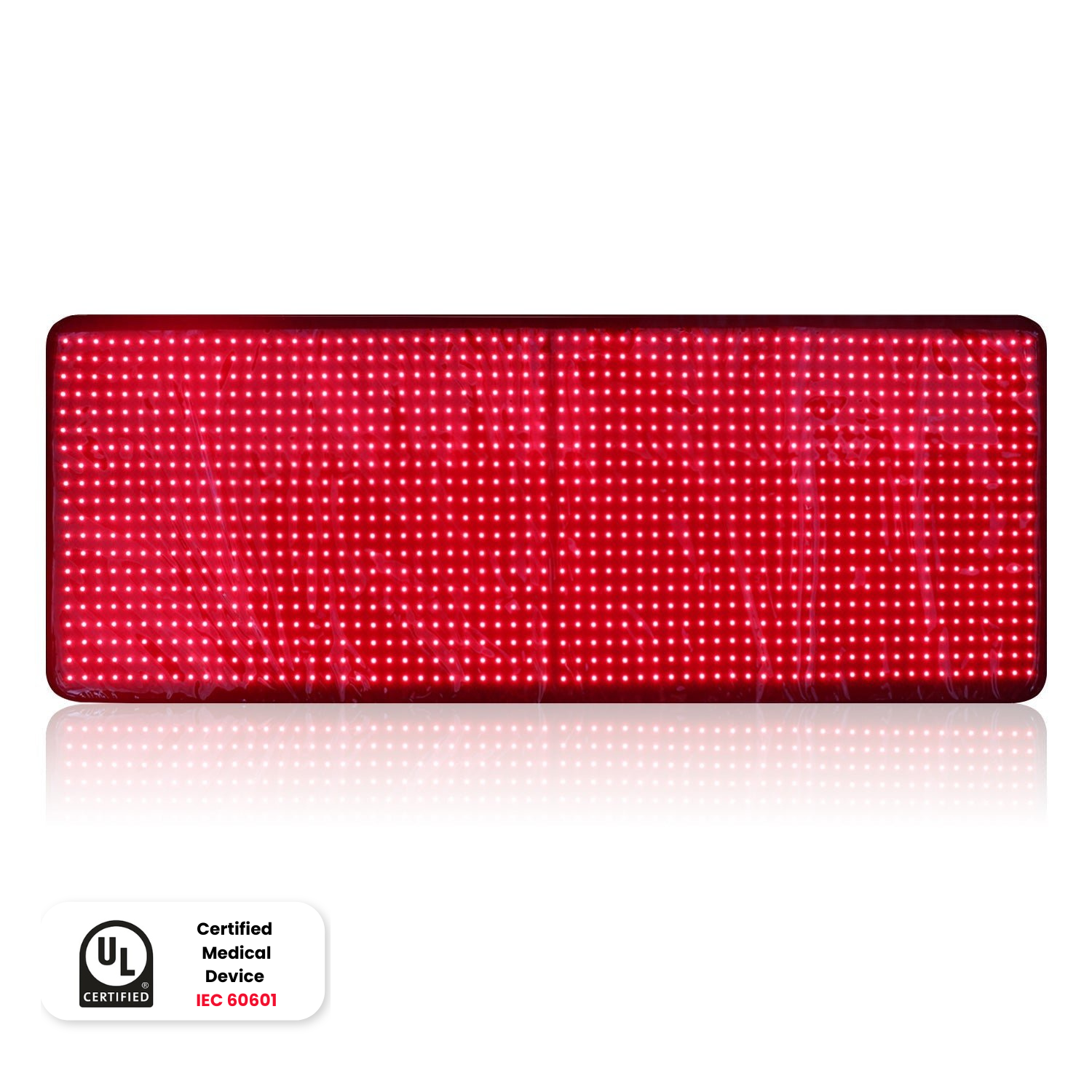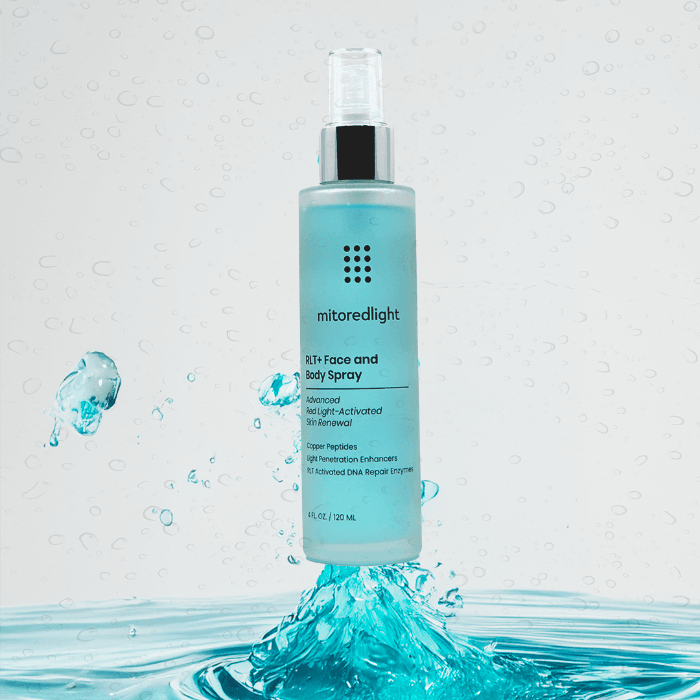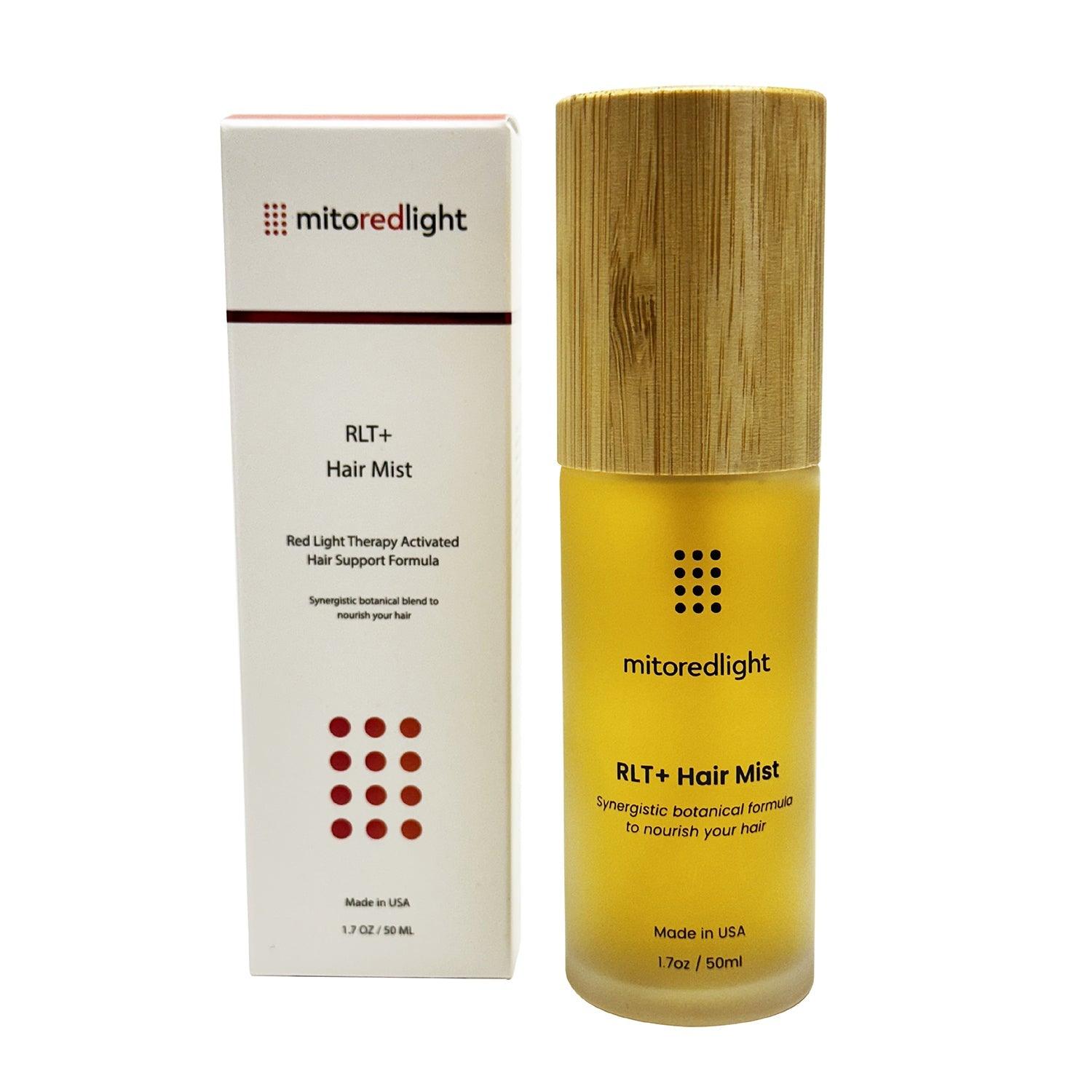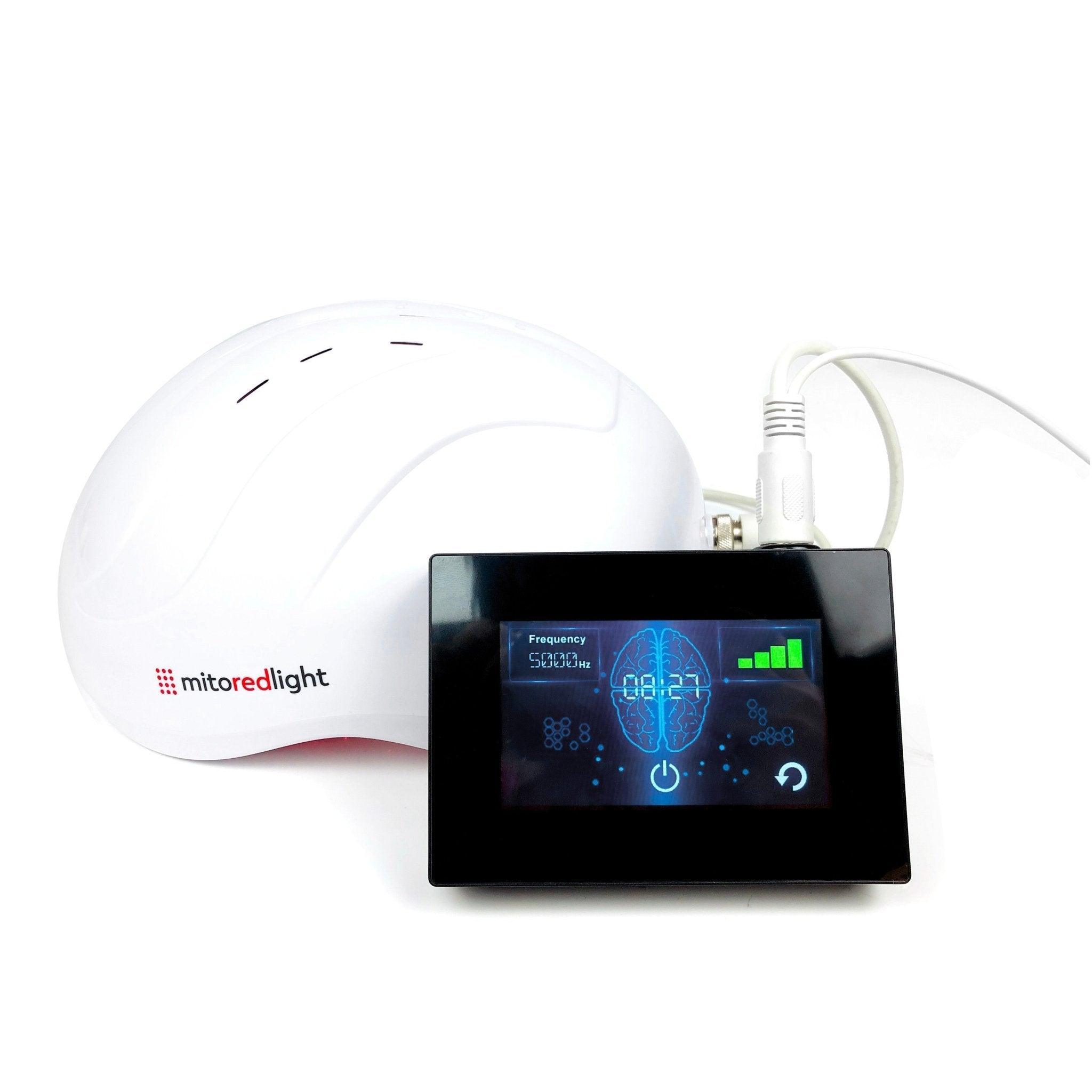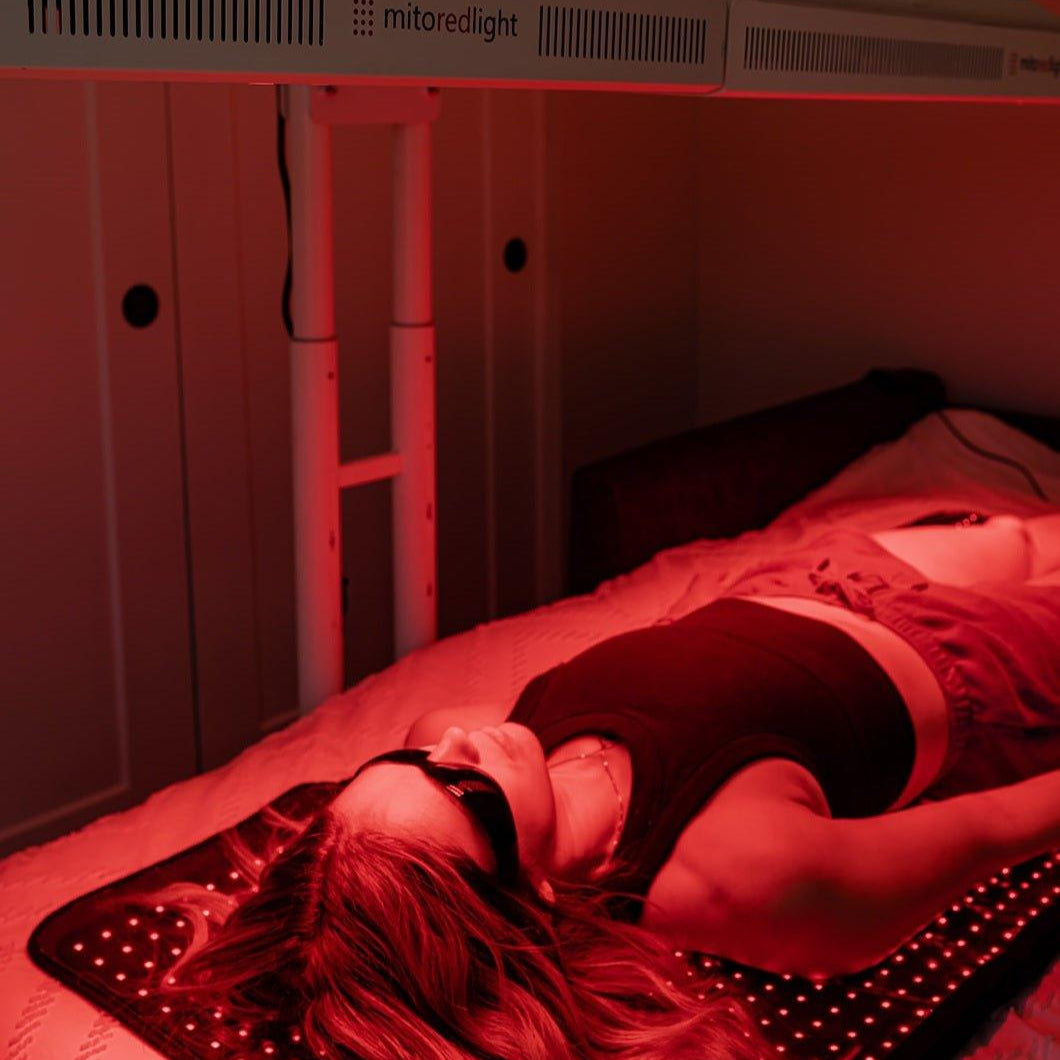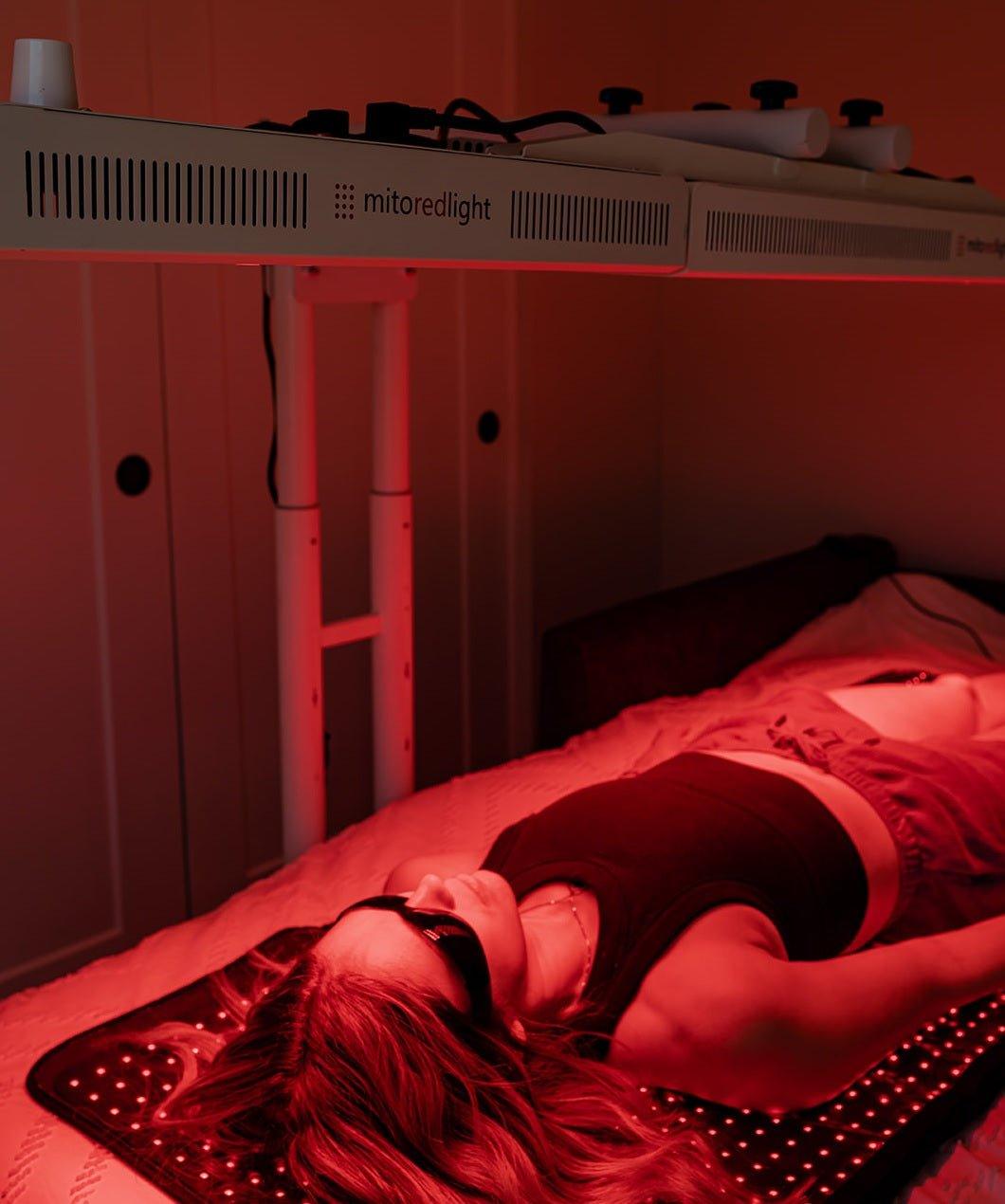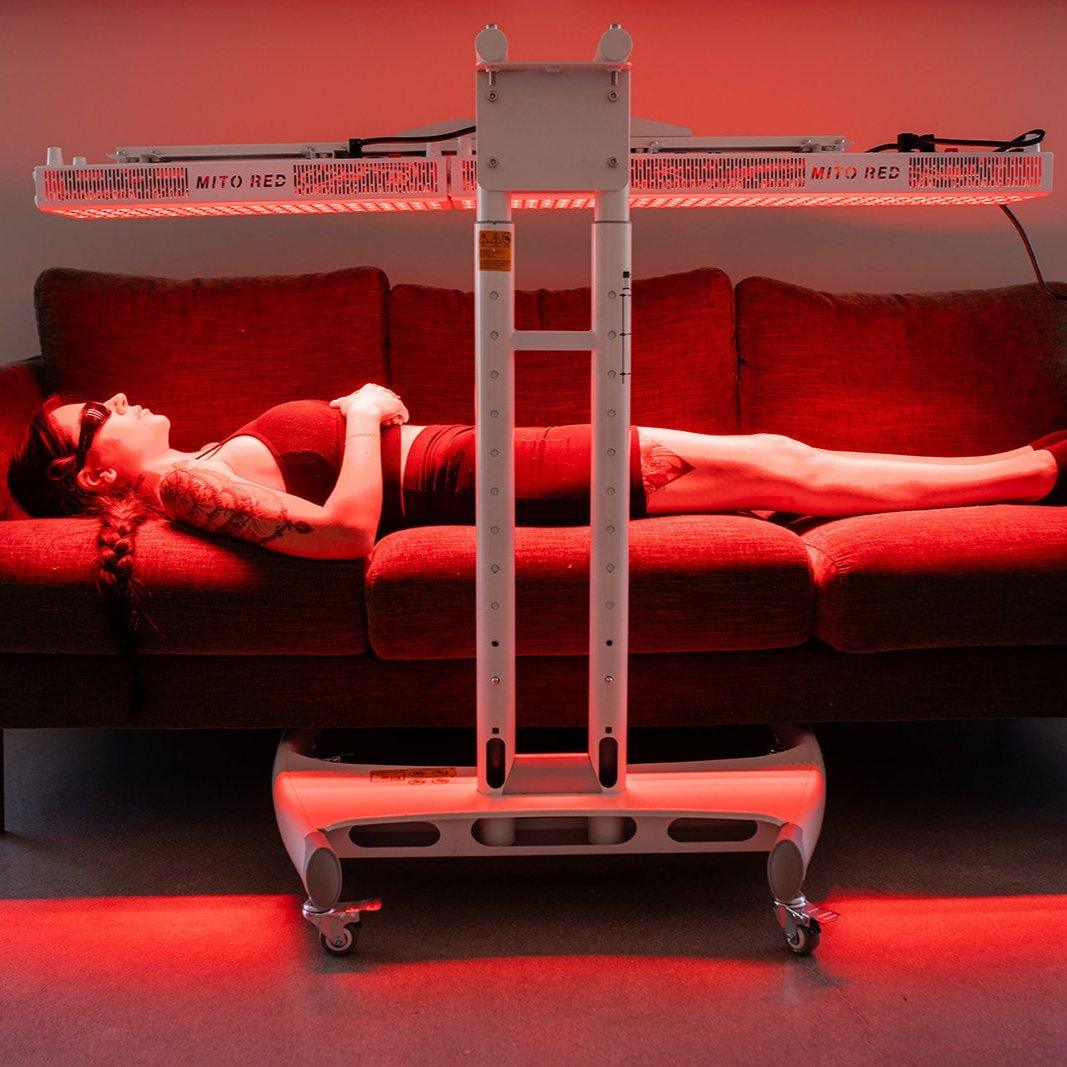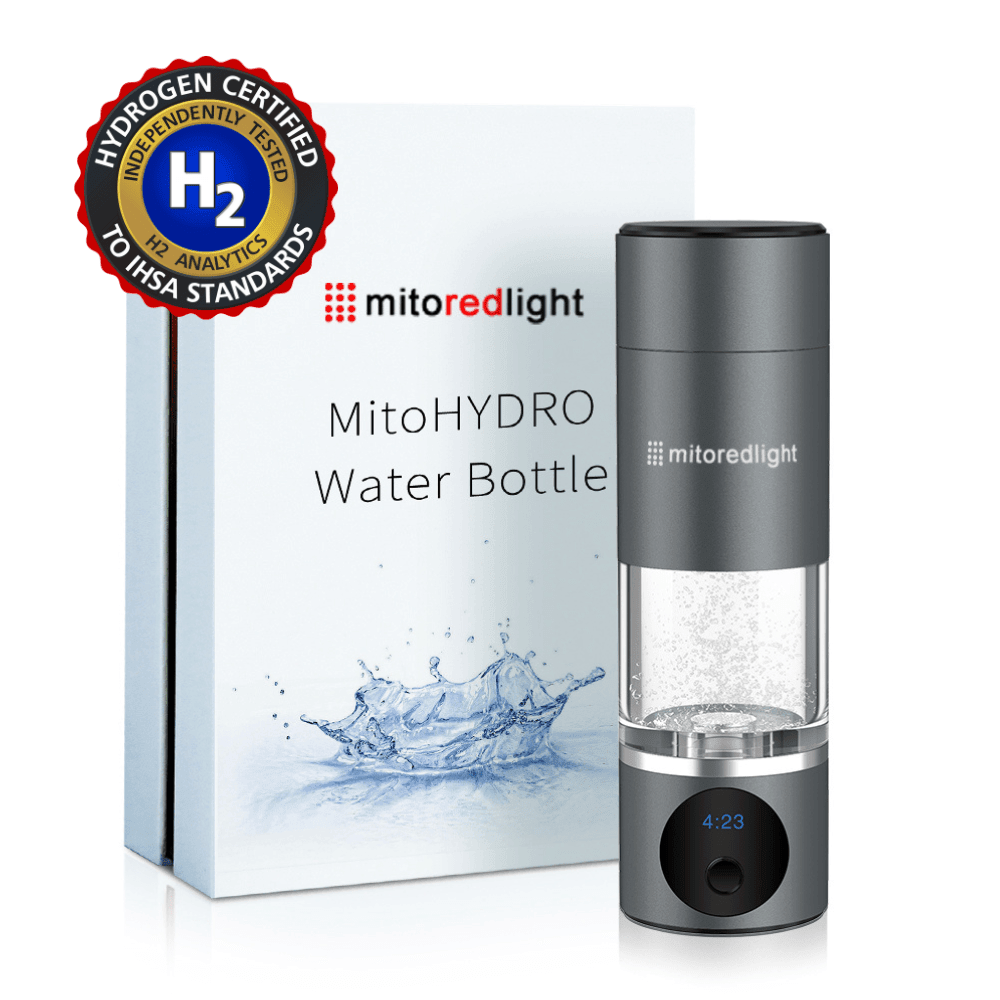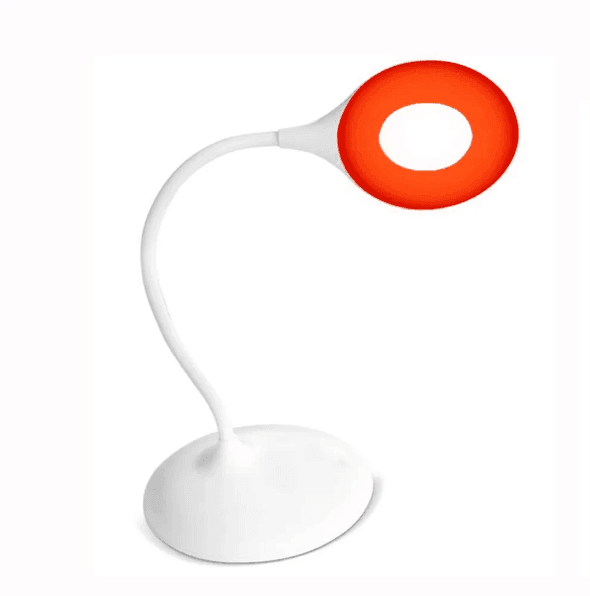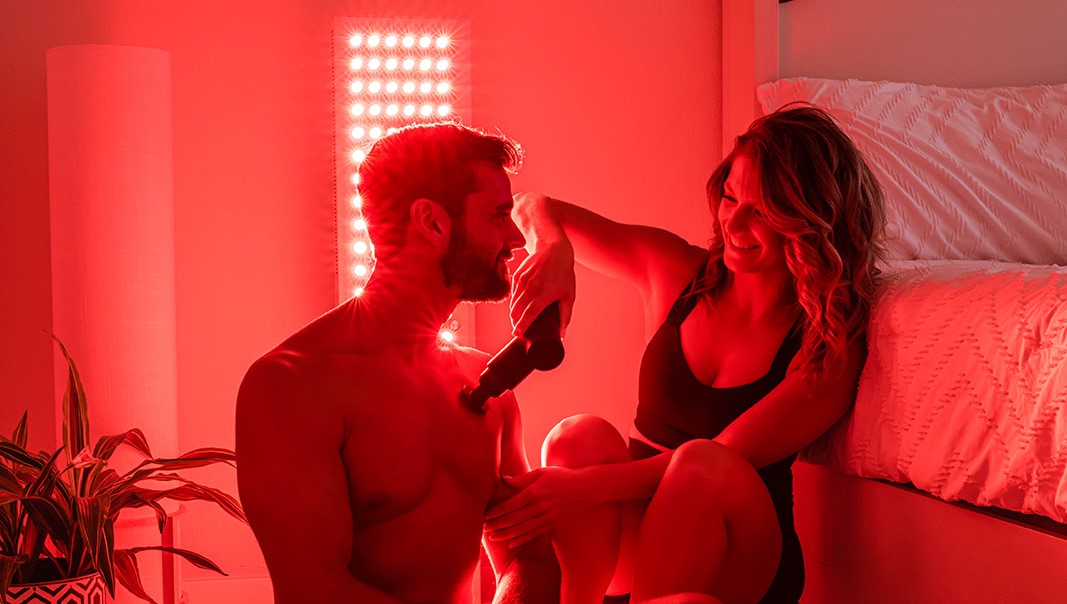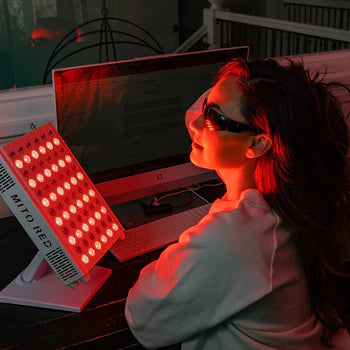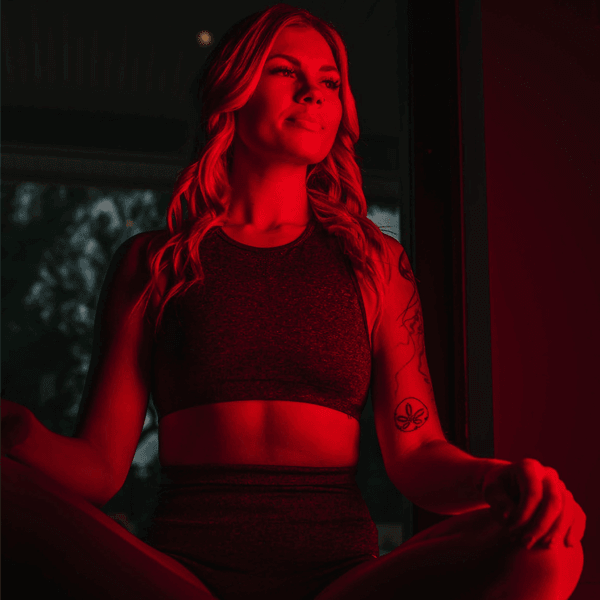DISCLAIMER: Mito Red Light devices are not clinically proven to diagnose, treat, cure, or prevent any medical conditions. Mito Red Light devices are low / risk general wellness devices aimed at affecting the body through supporting cellular function. The scientific studies referenced in this article are for educational and informational purposes only and are meant to educate the reader on the exciting and growing field of phototherapy. To see a list of precautionary warnings and contraindications, click here
Stress is a natural part of life; it’s how our bodies and minds react to life’s various uncertainties. However, once it becomes chronic, it can seriously disrupt our well-being. Feeling chronically stressed has an impact on our everyday activities, social interactions, and even the way we think, which in turn shapes how we view the world and our immediate surroundings. Although there are numerous ways to manage stress, not all of them are equally advantageous. Today, we'll explore a therapeutic approach that stands out from the rest in terms of effectiveness. By reading on, you’ll discover how you can combat chronic stress with red light therapy and reclaim a sense of balance in your life.
When does stress become chronic?
To better understand the terms we'll use throughout the article, it's important first to learn how to differentiate between ordinary and chronic stress.
Ordinary stress is – put simply – that good old feeling of worry or tension when one of numerous life's challenges chooses to pop up (an example: feeling stressed the night before an important exam because you haven’t been studying much). It's our mind's way of nudging us to tackle problems and face what's in front of us; it can even be a good thing. This type of stress triggers the release of adrenaline, helping us power through tasks, boosting our performance, and sharpening our problem-solving skills.
Then there’s its evil and more sophisticated twin – chronic stress.
Instead of being a short-term boost and going away once the job’s done (another example: once you’ve passed the abovementioned exam), chronic stress sticks around for the long haul; it can gradually wear you down, turning daily life into a real struggle.
This type of stress doesn’t help you tackle tasks; instead, it can make you feel overwhelmed and drained, with zero vitality. When stress lingers like this, it will mess with both your body and mind, leading to various issues, physical and mental: anxiety, sleepless nights, muscle aches, high blood pressure, and perhaps even a weakened immune system.
Over time, as the American Psychological Association (APA) suggests, chronic stress can pave the way for serious health problems, including heart disease, clinical depression, and obesity (which red light therapy, the focal point of this text, can help you fight).
Let's explore how you can address this issue with the help of red light therapy.
What is red light therapy?
Red light therapy is one of the most unique treatment methods out there, and it uses soft red and near-infrared light to amplify your body’s natural healing abilities. The light goes deep into your cells, kick-starting the mitochondria – they’re the energy factories of your cells. When these tiny powerhouses get energized, they produce more ATP (adenosine triphosphate), which is like the body’s battery power.
This energy surge helps your body with all sorts of important tasks: fixing tissues, improving blood flow, calming inflammation, and enhancing your body's defenses. Plus, red light therapy can influence hormones and brain chemicals that affect how you feel and think (especially useful for what we’re discussing today), giving your overall wellness a real boost.
Ways to combat chronic stress with red light therapy
Now that we’ve gone through some basic information, it’s time to see how you can utilize red light therapy in chronic stress treatment.
Using red light therapy to address the physical effects of mental health issues (an addition to regular therapy)
Chronic stress, particularly as it manifests in your body, is one of the most well-recognized physical indicators of mental illness. Red light therapy can complement your regular mental health treatments by helping to ease these physical symptoms, as they can slow down the process. This therapeutical method reduces stress-related issues and makes your overall healing journey smoother and more manageable. In other words, after your sessions, you’ll start to feel better and more balanced; you’ll enjoy a bit of relief and support as you work through your mental health challenges.
Red light therapy can help you restore energy
After a few red light therapy sessions, you’ll likely notice a solid boost in your energy levels. Chronic stress has a way of sapping your energy, leaving you feeling drained and sluggish. Red light therapy helps turn things around by enhancing cellular metabolism and increasing ATP production.
As a result, you may suddenly find yourself feeling more alert, motivated, and ready to take on your daily tasks with the enthusiasm you’ve been missing all along. Also, if you’re in therapy, attending these therapeutical sessions will, of course, help you tackle the issue with more vitality (that’s why red light therapy is a great complementary method).
Red light therapy: a path to better sleep patterns
Chronic stress can lead to sleep issues like insomnia or sleeping too much. Red light therapy can be a gentle way to help get your sleep patterns back on track. You can support your body's natural sleep-wake cycles by using red light in the morning or afternoon. This encourages your brain to produce more melatonin at night, and melatonin is the hormone that helps you fall asleep.
And what about oxidative stress?
Lastly, feeling constantly stressed can boost oxidative stress in your body, which happens when there are too many harmful free radicals and not enough protective antioxidants; antioxidants assist in neutralizing free radicals, which are unstable chemicals that can damage DNA and cells. Red light therapy can help lower oxidative stress as it boosts the production of natural antioxidants like glutathione and superoxide dismutase. This can protect your cells from damage and slow down the aging process.
Conclusion
There are many ways to combat chronic stress with red light therapy, and what we’ve discussed is just the beginning. Incorporating red light therapy into your routine can keep your stress levels more balanced. Thankfully there are companies like Mito Red, that provide easy to use red light therapy at home devices.
However, it's important to remember that red light therapy alone might not be enough to address deeper issues that chronic stress can indicate. It’s a complementary tool that works best alongside traditional psychotherapy. Together, they can provide a powerful boost, making your overall treatment plan more effective – think of it as the perfect complement to a well-rounded approach.
Click to learn more about potential red light therapy benefits.
References:
https://www.who.int/news-room/questions-and-answers/item/stress
https://www.apa.org/topics/stress/chronic
https://floathub.co.uk/how-full-body-red-light-therapy-can-help-with-anxiety/
